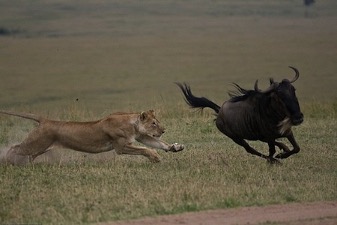When I started in current affairs journalism with the Australian Broadcasting Corporation, I did a lot more radio than TV.
And while television is generally seen as being more glamorous than radio, people who work in radio often claim that their medium is superior.
Why???
Because they say that in radio, the pictures are better!!!
This view of radio was popularised by the legendary British-American journalist Alistair Cooke who, in turn, attributed it to a seven-year-old boy in the early days of television.

These were back when TV pictures were – I understand from old-timers – much more fuzzy than they are today.
This made the “pictures” on radio seem even brighter, sharper and more colourful in comparison.

Claims about radio’s pictorial superiority rest on the fact that in radio, the pictures generated are those which are created in the minds of the listeners.
This applies in radio journalism as much as it does in radio plays, radio advertisements and radio interviews.
In fact, creating pictures in the minds of your audience is something which can – and should – apply in effective communication across all media….and in all forms of face-to-face verbal communication.
Great communicators effectively project pictures into your mind to help them to explain, to persuade and to get their message across!
To illustrate this, the video which follows features a man who is particularly good at putting pictures in the minds of his audience.
The man uses a story about a lion chasing two buffaloes to convey his message.
The story-teller is Nigerian speaker, politician and pastor Sam Adeyemi.
And he’s also been the president of the Nigerian Union of Journalists.

In the video clip he’s seeking to persuade members of his audience that they should turn around and face their fears.
The speech works especially well in the video because it contains dramatic footage of a lion chasing two buffaloes – which is also described and interpreted by Sam Adeyemi.
You will find out what one of the buffaloes does along the way.

With massive credit to the camera operator who recorded this amazing wildlife chase, you get to see some extraordinary “Lion versus The Buffaloes” footage.
But – going back to the world of radio – if you shut your eyes as the video plays and just listen to Sam Adeyemi tell the “Lion v Buffaloes” story it also comes through very well.
The story may even be powerful enough to persuade you to turn around and face your fears.
Check it out here and see what it does for you!
I’ve never had the pleasure of meeting Sam Adeyemi, and I am certainly not endorsing his political or religious views.
But based on this one video, I can vouch for his ability to put pictures in people’s minds.
In fact, in this video he would be even better if he made sure that he wasn’t ever-so-slightly undermining himself.
This because he says, at the crucial moment, that the heroic buffalo takes “one step” towards the lion – when in fact you can see in the video that the buffalo actually takes several steps towards the lion.
But such nit-picking aside, being able to project pictures into the minds of your audience is a learnable – and profoundly useful – skill.
It’s something that I cover in sessions I run – for individuals and small groups – on “Presenting With Confidence, Impact & Pizzazz”.
You can find out more about these sessions at:
http://www.michaeldoddcommunications.com/presenting-with-confidence-impact-and-pizzazz/
I also help participants build the skill of putting pictures into people’s minds in communications-boosting sessions on:
• Media Interview Response Training
http://www.michaeldoddcommunications.com/media-master-classes/
• Give Great Answers To Tough Questions
http://www.michaeldoddcommunications.com/give-great-answers-to-tough-questions
• Talking To The Camera
http://www.michaeldoddcommunications.com/talking-to-the-camera/
If you or your colleagues get nervous about the idea of speaking to an audience – face-to-face or through the media – be aware that I’ve enjoyed helping many participants to overcome their fears on this.
For participants who have the desire to take on the challenge, there’s a number of things we can do to tackle the problem.
Traditionally it’s been said that, to achieve success on this, you need the courage of a lion.

But I’m now inclined to say that what you really need is the courage of a buffalo!


